ELM 101: How Enterprise Legal Management Streamlines In-House Legal Work
In today’s fast-paced business landscape, legal teams are expected to move faster, control costs, and deliver more value. This shift demands more than spreadsheets and manual processes — it requires purpose-built corporate legal department tools that streamline operations and unlock performance.
Enter Enterprise Legal Management (ELM): the backbone of modern legal operations software. ELM platforms unify legal processes — from matter tracking to compliance and contracts — into a single, powerful system.
If you’re evaluating in-house legal department tools or seeking a better way to manage your team, this guide will help you understand how ELM works, how it compares with CLM, and how to choose the right solution for your enterprise.
Written by Knowledge Team, posted on Jun 11, 2025

What Is Enterprise Legal Management (ELM)?
Enterprise Legal Management (ELM) is a centralized platform designed to simplify and optimize the daily operations of corporate legal teams. From legal matter management software to spend and compliance tracking, ELM systems improve efficiency, reduce risk, and give legal leaders full operational visibility.
Legal departments can move away from fragmented tools and manual oversight, toward streamlined workflows and real-time analytics.

Key Functions of ELM for In-House Legal Teams
A modern ELM platform delivers a wide array of tools to help legal departments operate strategically:
1. Matter Management
Using legal matter management software, teams can centralize all active and historical cases — from litigation and investigations to IP and regulatory actions. This allows for better collaboration, easier tracking, and faster reporting.
2. Legal Spend Management
ELM platforms enable detailed legal budget tracking, invoice review, and vendor performance monitoring. They help identify cost-saving opportunities and enforce billing guidelines for outside counsel.
3. Compliance Management
Leading ELM platforms double as enterprise compliance software, giving legal teams the ability to manage obligations, policies, and regulatory risks in one place — especially valuable for companies facing multiple jurisdictions or high-stakes regulatory environments.
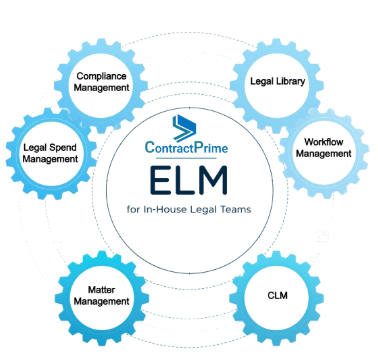
How ELM Streamlines Legal Operations
Disconnected workflows, inconsistent data, and manual approvals create drag. ELM platforms tackle this by:
Automating Legal Workflows
Automate routine tasks like matter intake, invoice routing, and compliance tracking to cut delays and reduce errors.
Boosting Collaboration
Legal, finance, and procurement teams can securely share documents, assign tasks, and track progress.
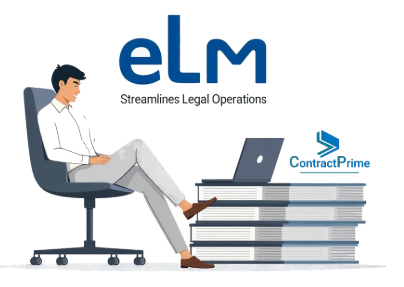
Centralizing Data
Everything is housed in a single, searchable repository.
Driving Productivity
One of the most effective solutions for improving legal team productivity, ELM platforms eliminate bottlenecks and allow legal teams to focus on higher-value work.
Delivering Insights
Real-time analytics surface KPIs, performance metrics, and risk trends that help align legal with business strategy.
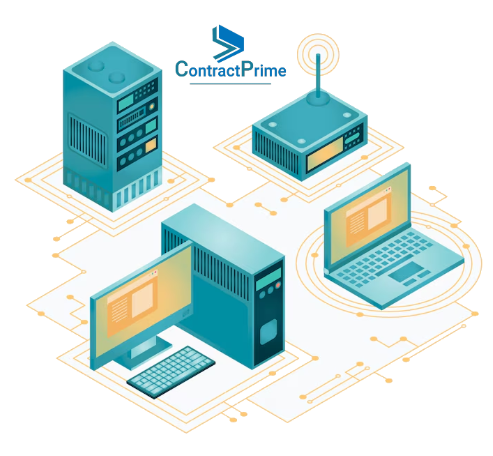
CLM vs. ELM: Understanding the Difference
Legal teams often ask, “What’s the difference between CLM and ELM?” Here’s the breakdown:
| Feature | ELM | CLM |
| Scope | Legal operations: matters, spend, compliance | Contract lifecycle: authoring, approval, renewal |
| Users | Legal operations, GCs, legal departments | Legal, sales, procurement, finance |
| Functions | Risk, policy, litigation, e-billing, audit support | Drafting, negotiations, e-signature, obligation tracking |
| Integration | May include or connect to CLM | Often integrated into ELM for full legal visibility |
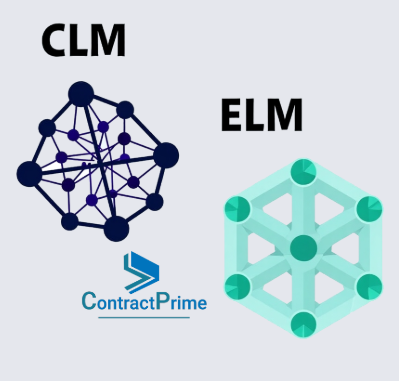
Why Integrating CLM Into ELM Matters
Managing contracts separately from legal matters can cause costly blind spots. When Contract Lifecycle Management (CLM) is integrated into an ELM platform:
- Legal teams gain full visibility into both obligations and associated risks.
- It supports better compliance and contract performance tracking.
- Collaboration improves across legal and business teams.
- Duplicate data entry and missed renewals are reduced.
For enterprises, this integration supports a more holistic view of risk and value across the legal function.
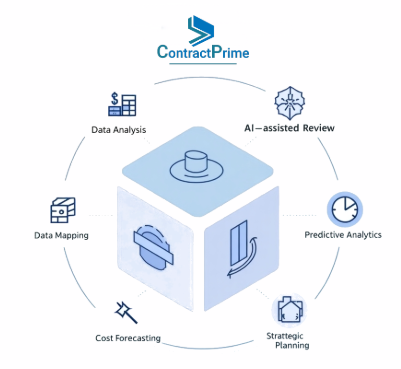
ContractPrime: A Unified ELM + CLM Platform
ContractPrime is one of the best legal technology platforms for legal teams seeking to unify operations across contracts, matters, spend, and compliance. It offers a seamless blend of ELM and CLM capabilities, built for modern legal departments.
Key Capabilities of ContractPrime
- Integrated CLM: Manage contract requests, approvals, obligations, and renewals within your ELM system.
- Workflow Automation: Set up no-code rules to automate legal workflows like document routing, escalations, legal document automation and alerts.
- System Integrations: Built on Microsoft 365, with integrated e-billing solutions.
- Real-Time Analytics: Visual dashboards track spend, contract risk, matter volume, and more — helping legal leaders demonstrate ROI and improve planning.
By consolidating tools into one intelligent platform, ContractPrime reduces friction and maximizes the value of your legal tech investments.

Benefits of Legal Tech Integration for Enterprises
As enterprises scale, disconnected systems pose real risks. A unified ELM + CLM solution like ContractPrime provides:
- ✅ Fewer Silos: A single source of truth for all legal data.
✅ Higher Efficiency: Centralized workflows and fewer handoffs.
✅ Reduced Risk: Standardized processes and clear audit trails.
✅ Improved Visibility: Enterprise-wide reporting and insights.
✅ Enterprise-Grade Readiness: Tailored for companies seeking robust legal technology for enterprises.

“
Ready to Transform Your Legal Department?
Today’s legal leaders are expected to be both risk managers and business enablers. That transformation starts with the right tools.
Whether you’re looking to manage litigation more effectively, reduce legal spend, or improve contract compliance, a robust ELM platform like ContractPrime is your best bet.
- ✅ Automate legal workflows
✅ Reduce operational drag
✅ Get full visibility across your legal portfolio
Discover ContractPrime — and modernize how your legal team works.
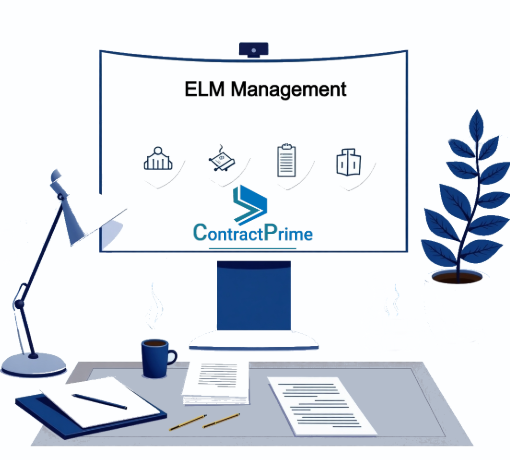
“
Frequently Asked Questions (FAQ)
How does ELM differ from CLM?
ELM is broader and includes legal operations functions like matter tracking, compliance, and spend management. CLM (Contract Lifecycle Management) specifically handles the contract process from initiation to renewal. CLM is often integrated into ELM for full legal visibility.
What are the benefits of using an ELM platform?
Key benefits include improved productivity, lower legal spend, better risk management, increased compliance, and data-driven decision-making. ELM platforms also enable automation and centralization of legal operations.
